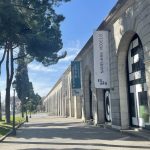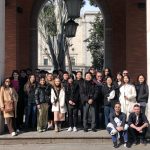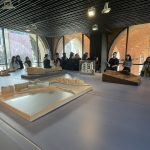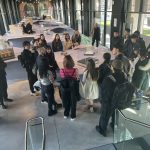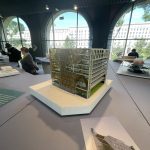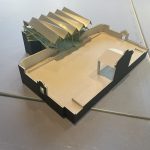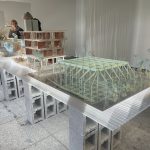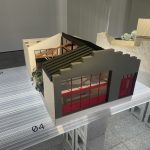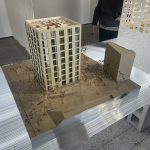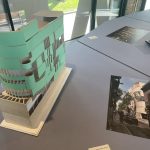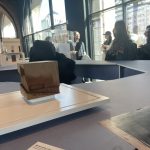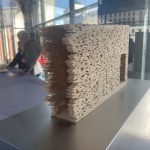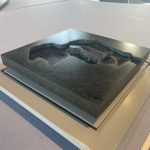As part of the MA Architecture and Adaptive Reuse study trip to Madrid in March 2024 the group were taken on a guided tour of two model heavy exhibitions: ‘The Construction of a Country: Models of Spanish Architecture from the Transition to Present Day’ & ‘Nameless Models’.
The exhibitions were both on display at a former metro station which has been converted into a multipurpose display space occupied by the La Casa de la Arquitectura.
The main ‘Construction of the County’ display was housed over two levels and presented a chronological look at the varied architectural projects across Spain over the last 30 years. Each case study was presented through a physical model alongside an image of the completed site. The choice to display in this way more often than not focusses on finished presentation standard models. This was not the case with the curation choices here which resulted in an excellent display of model typologies including the abstract conceptual, technical studies, section studies, massing, collage & both colourised and monotone presentation examples. The range of styles and media used reflect the diverse range of projects covered and the complex aims of the messages being communicated as part of the design processes and architect-client conversation.
The group were given a guided tour by Alberto Yebenes and a guide from the venue who explained the cultural and professional relevance of the projects.
If you are in Madrid any time soon this exhibition was recently extended to run until June.
The second exhibition, ‘Nameless Models’ questions the role models play in the so called ‘Digital Age’. The display features a range of model types and themes without context and was initially presented at the Biennale of Young Architecture in Catalonia. The concept was to ask viewers to comment of what each model told them about a building design without them being given any information about the intention beforehand. The findings were then discussed to reveal how rich the embodied information of physical models continues to be as the medium helps to bridge the digital with reality and our understanding of practical possibilities and limitations.
- Nameless Models Exhibition
Speaking with Alberto, he explained more about the purpose of the exhibition and how students might be influenced by its contents.
“Casa de la arquitectura is a cultural landmark. It has just reopened following retro fit (Adaptive reuse) so students (like me at the time) can enjoy again a flexible exhibition space specific for architectural models, plans installations etc. The aim of the model exhibition was to showcase 50 years of architecture from the Spanish transition to democracy from the Franco dictatorship era, going through economical wealth and decay. Highlighting the different architectural and urban implications: Sustainability, social sustainability, detail etc
The models displayed reflected many different sorts of scales, levels of detail and urban street escape and materiality. These combined represent graphic 3dimensional communication opportunities and variety which is absolutely key for the representation of architecture at any level. For Adaptive reuse specifically, the materiality chosen, detail, sectional detail and urban aspects showcased a remarkable catalogue of opportunities to express relationships between new and old, absolutely critical for our course.
Because of the time in the semester (investigation) our course was, the story about the different historical, societal, cultural and economic periods in Spain reflected in the use, typologies and scale of the models, opened a very useful conversation with yourself (Scott Miller) as a translator between these theories and the final student models in B15.
I particularly liked the middle of the exhibition, because it aggregated the boundary between economic optimism and recession/ decay, which you could dramatically understand through the typologies and the isolation of the models, which were less considerate with the urban context. It had a space for the renewed and silenced relevance of female architects as well.
Nameless models was a side exhibition, also incredibly interesting, as the lack of labelling inspired visitors to guess and interprate the models, materials, and details with no additional information about authors or building.”
More information about the exhibitions and La Casa de la Arquitectura can be found on their social media channel @casadelaarquitectura and on their website here:
https://lacasadelaarquitectura.es/recurso/nameless-models/071e209f-ecd1-b46a-9c78-4cee3abe9411
Thank to the hosts at La Casa de la Arquitectura and to Alberto for his organisation and allowing me to join the visit.

